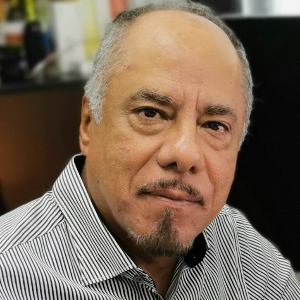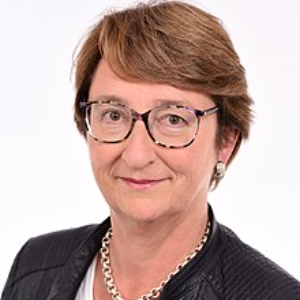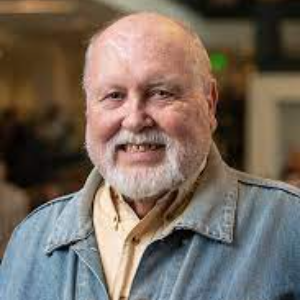David J McCann, National Institute on Drug Abuse, United States
For almost 30 years, the U.S. National Institute on Drug Abuse (NIDA) has supported development of medications for the treatment of substance use disorders and their consequences. Working in close partnership with the private sector and the U.S. Food and Drug Administration [....] » Read More





























Title : Prescribing psychiatric medications in alcohol use disorders and other addictions Risks and avoiding risk
Jonathan Chick, Consultant Psychiatrist and Medical Director, Castle Craig Hospital, United Kingdom
Depression, anxiety, impulsivity, difficulty concentrating, mood swings and occasionally psychotic symptoms are recognised symptoms in addiction to mind-altering substances.Sufferers who protect their use of the substance may precipitate GPs and psychiatrists into inappropriate p [....] » Read More
Title : He who knows the addiction know medicine
Leo O Lanoie, Saskatchewan Health Authority, Canada
Persons with Substance Use Disorder are subject to a host of medical, psychiatric and social conditions that predispose to SUD and/or complicate it. These conditions negatively impact quality of life, and all to frequently can end life if not recognized and addressed. Many per [....] » Read More
Title : A novel approach to study the brain mechanism of addiction
Rajendra D Badgaiyan, South Texas Veteran Health Care System, United States
Dopamine plays a predominant role in establishment and maintenance of addiction. The precise mechanism involved in this process however is unclear. An important reason for our lack of knowledge is difficulties associated with measurement of dopamine release in healthy human brain [....] » Read More
Title : Optimal Opioid Substitution Treatment OST, based on the European Union EU statistics through 30 years What to learn from diverging France and Norway
Alf Martin Haraldsen, General Practitioner, Norway
Is it possible to reduce “Opioid overdose deaths” by more than 50%? Opioids (heroin/methadone/morphine/phentanyl/buprenorphine etc.) contributes to about 70-80% of total “Drug related deaths”(DRD) in a country. DRD is the parameter used by the EU in its an [....] » Read More
Title : Take home naloxone in multicentre emergency settings Protocol for a feasibility study
Helen Snooks, Medical School, Swansea University, United Kingdom
Background Opioids such as heroin kill more people worldwide than any other drug. In the UK, death from opioid poisoning is at record levels. Naloxone is an opioid agonist which can be distributed in take home ‘kits’, known as Take Home Naloxone (THN). Methods [....] » Read More
Title : The development and implementation of a multidisciplinary curriculum and training for screening brief intervention and referral to treatment
Joan Carlson, Indiana University, United States
The purpose of this paper is to describe the development and implementation of a multi-disciplinary curriculum and training of screening, brief intervention and referral to treatment (SBIRT) at a large mid-western university in the U.S. The program called “Advancing Mu [....] » Read More
Title : ADHD in Heroin addicts Prevalence and psychiatric comorbidity
Pasqualina Rocco, Addiction Treatment Center, Local Health Service, Italy
Introduction: Attention deficit hyperactivity disorder (ADHD) is a neurodevelopmental disorder that in most cases persists into adulthood. Often associated with other psychiatric disorders and the most frequent is substance use disorder. The ADHD-substance use comorbidity ha [....] » Read More
Title : The utility of cognitive behavioral therapy for insomnia CBTI in reducing sleep medication usage
Derek Loewy, Scripps Clinic Viterbi Family Sleep Center, United States
For many years, the most common medical treatment for chronic insomnia has been sedative hypnotic drugs. Chief among these have been benzodiazepines and the so called “non-benzodiazepine” drugs (i.e., zolpidem, eszopiclone) which act more selectively on GABA receptors [....] » Read More
Title : Empowering through connection A case for helping clients heal through the therapeutic relationship
Amy Turnbull Drilingas, FCC Behavioral Health Cape Girardeau, United States
The therapeutic relationship can be a powerful catalyst to engage clients in building healthy relationships with others and healing from the trauma in their past. While most practitioners can agree that the therapeutic alliance is important, there has been a change of focus that [....] » Read More
Title : Breathing fire and sweating the rotgut An indigenous response to the great alcohol addiction among the blackfeet
Jay Hansford C Vest, University of North Carolina at Pembroke, United States
In 2001, while teaching at Hamilton College in Clinton, New York, a former student – having taken my Native American Religious traditions course - sought me; he complained of soul sickness after experimenting with an opiod. Receiving him within the context of my indig [....] » Read More
Title : Building recovery capital through community theatre
Stephanie Kewley, Liverpool John Moores University, United Kingdom
It is well documented that engaging with arts-based activities, provides general populations a wide range of social, health, and well-being benefits. Yet, the evidence for arts-based activities delivered with/to people in drug and alcohol recovery treatment communities, in the UK [....] » Read More
Title : The role of reinforcement sensitivity and parental behaviour in development of aggressive behaviour regarding its form and function
Marija Saric Drnas, Faculty of Education,University of Zagreb, Croatia (Hrvatska)
A multidimensional approach to studying aggressive behaviour is based on a distinction between the various functions and various forms of aggression. The function of aggressive behaviour is related to the motive of the perpetrator. Therefore, a distinction is made between reactiv [....] » Read More
Title : The effects of yoga on addiction disorders
Fruzsina I, Károli Gáspár University of the Reformed Church, Budapest, Hungary
The focus of the presentation will be the effects of practicing yoga on addictions. From the point of addiction theories, the connection between emotional regulation and addictive disorders is emphasized. Psychoactive substance use can be interpreted as a tool for balancing extre [....] » Read More
Title : The relationship between depression and suicide Clarifying mediating and moderating factors
Josephine Ridley, VA Northeast Ohio Healthcare System, United States
Somewhere in the world, someone dies by suicide every 40 seconds (WHO, 2014). The relationship between depression and suicide is complicated. In the U.S., mental health problems were the most commonly found precipitating circumstance to suicide with roughly 38% describing a depre [....] » Read More
Title : Comorbidity between alcohol consumption and other psychiatric disorders Importance of group intervention
Lidia Moutinho, Lisbon Psychiatric Hospital Center, Portugal
Clinical epidemiology supported by neuroscience shows a strong interconnection between psychiatric disorders and substance use/abuse. This comorbidity is recognized by the World Health Organization as Dual Pathology. It is estimated that a percentage varying between 40% and 70% o [....] » Read More
Title : Assessing the efficacy of MOTI 4 for reducing the use of cannabis among youth in the Netherlands A randomized controlled trial
Hans B Dupont, Maastricht University, Netherlands
The Moti-4 intervention, in which motivational interviewing, self–monitoring, and strengthening behavioral control are used, was developed in the Netherlands in response to several rapid assessments of problematic use of cannabis among vulnerable adolescents. The main goal [....] » Read More
Title : Hidden drug abuse in Hong Kong
T Wing Lo, University of Hong Kong, Hong Kong
The paper examines the issue of hidden drug abuse in Hong Kong. Although of?cial statistics show that the reported number of drug-abuse cases has been in decline in recent years, it has been reported that drug abusers tend to hide themselves at home to take drugs; thus, they are [....] » Read More
Title : The relationship between religiosity, spirituality and substance abuse
Yaacov J Katz, Bar-Ilan University, Israel
Religiosity may be defined as the adoption of a core set of previously established religious beliefs and practices concerning the ultimate nature of life and existence. Religiosity seems to reliably predict lower levels of substance abuse (Yonker, Schnabelrauch, & De Haan, 20 [....] » Read More
Title : Rate and sociodemographic predictors of psychoactive substance use among secondary school students in a rural community in Nigeria
Mbachu Chioma Ngozichukwu Pauline, Nnamdi Azikiwe University Teaching Hospital,, Nigeria
Use of Psychoactive substances by adolescents and young people poses a significant public health threat despite mass campaigns and education. Adolescence being a period of transition from childhood to adulthood is a potential target for health education aimed at initiating and ma [....] » Read More
Title : Look what dragged the cat in, Part II Prioritizing the gateway drug
Scott Stevens, Alcohologist.com, United States
The decade of the 2010's shelled hospitals and first responders with an explosion of opioid-related illness, injury, and death. Preventable drug overdoses tallied 54,793 lives lost in 2016 – an increase of 391 percent since 1999. Accidental drug overdose deaths increase [....] » Read More
Title : Narcissists, Psychopaths, Abuse
Sam V, Southern Federal University, Russian Federation
he unpalatable truth is that falling in love is, in some ways, indistinguishable from a severe pathology. Behavior changes are reminiscent of psychosis and, biochemically speaking, passionate love closely imitates substance abuse. Appearing in the BBC series Body Hits on December [....] » Read More